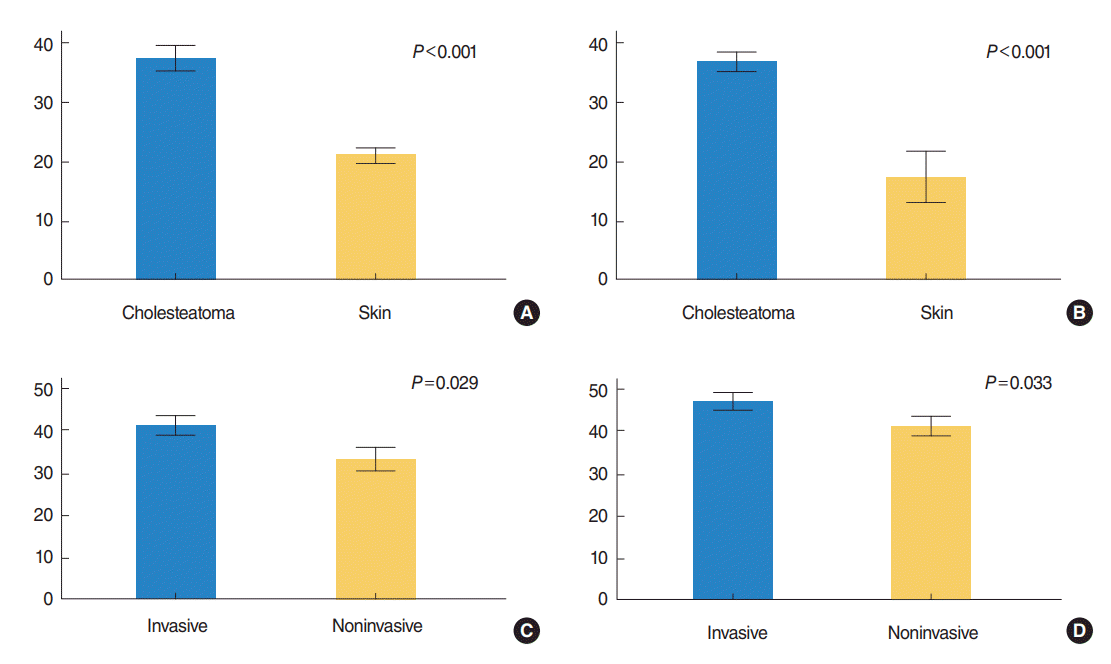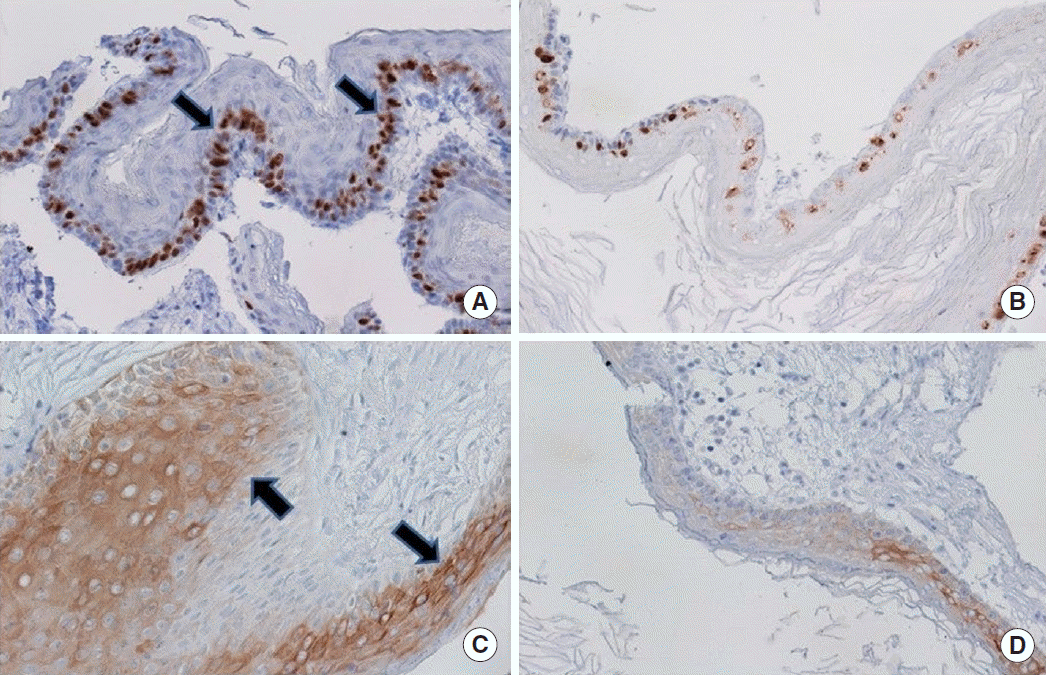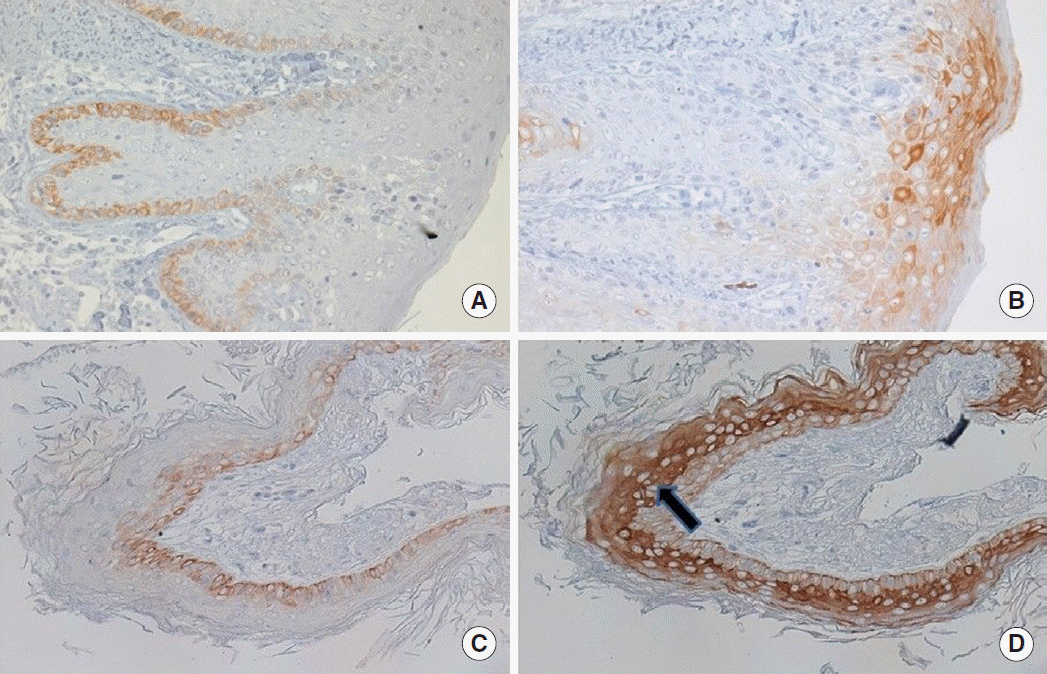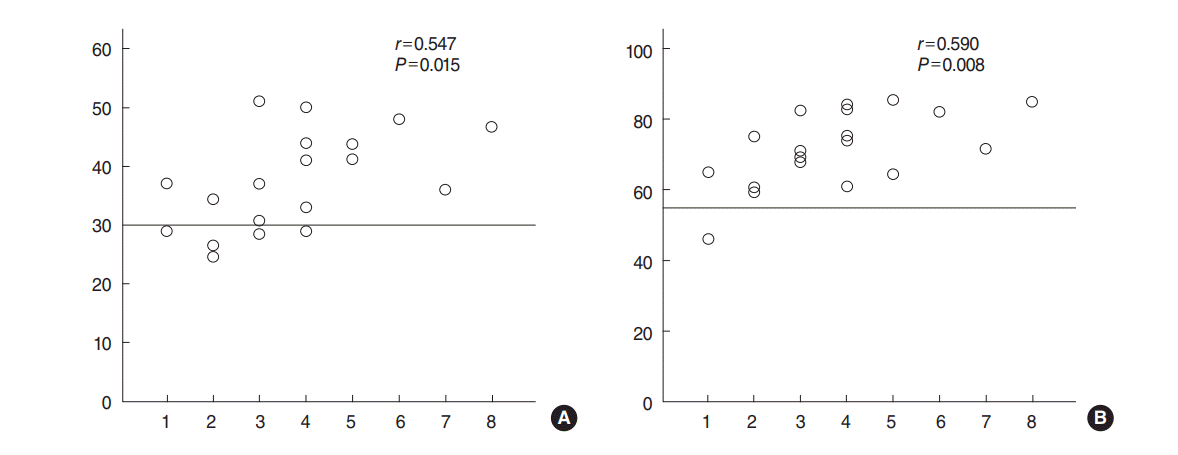1. Olszewska E, Wagner M, Bernal-Sprekelsen M, Ebmeyer J, Dazert S, Hildmann H, et al. Etiopathogenesis of cholesteatoma. Eur Arch Otorhinolaryngol. 2004; Jan. 261(1):6–24.

2. Bujia J, Schilling V, Holly A, Stammberger M, Kastenbauer E. Hyperproliferation-associated keratin expression in human middle ear cholesteatoma. Acta Otolaryngol. 1993; May. 113(3):364–8.
3. Juhn SK, Jung MK, Hoffman MD, Drew BR, Preciado DA, Sausen NJ, et al. The role of inflammatory mediators in the pathogenesis of otitis media and sequelae. Clin Exp Otorhinolaryngol. 2008; Sep. 1(3):117–38.

4. Peek FA, Huisman MA, Berckmans RJ, Sturk A, Van Loon J, Grote JJ. Lipopolysaccharide concentration and bone resorption in cholesteatoma. Otol Neurotol. 2003; Sep. 24(5):709–13.

5. Olszewska E, Jakimowicz-Rudy J, Knas M, Chilimoniuk M, Pietruski JK, Sieskiewicz A. Cholesteatoma-associated pathogenicity: potential role of lysosomal exoglycosidases. Otol Neurotol. 2012; Jun. 33(4):596–603.
6. Sikka K, Sharma SC, Thakar A, Dattagupta S. Evaluation of epithelial proliferation in paediatric and adult cholesteatomas using the Ki-67 proliferation marker. J Laryngol Otol. 2012; May. 126(5):460–3.

7. Mallet Y, Nouwen J, Lecomte-Houcke M, Desaulty A. Aggressiveness and quantification of epithelial proliferation of middle ear cholesteatoma by MIB1. Laryngoscope. 2003; Feb. 113(2):328–31.

8. Banco B, Grieco V, Di Giancamillo M, Greci V, Travetti O, Martino P, et al. Canine aural cholesteatoma: a histological and immunohistochemical study. Vet J. 2014; Jun. 200(3):440–5.

9. Shiwa M, Kojima H, Moriyama H. Expression of transforming growth factor-alpha (TGF-alpha) in cholesteatoma. J Laryngol Otol. 1998; Aug. 112(8):750–4.
10. Yamamoto-Fukuda T, Takahashi H, Terakado M, Hishikawa Y, Koji T. Expression of keratinocyte growth factor and its receptor in noncholesteatomatous and cholesteatomatous chronic otitis media. Otol Neurotol. 2010; Jul. 31(5):745–51.

11. Macias MP, Gerkin RD, Macias JD. Increased amphiregulin expression as a biomarker of cholesteatoma activity. Laryngoscope. 2010; Nov. 120(11):2258–63.

12. Lee SH, Jang YH, Tae K, Park YW, Kang MJ, Kim KR, et al. Telomerase activity and cell proliferation index in cholesteatoma. Acta Otolaryngol. 2005; Jul. 125(7):707–12.
13. Yetiser S, Satar B, Aydin N. Expression of epidermal growth factor, tumor necrosis factor-alpha, and interleukin-1alpha in chronic otitis media with or without cholesteatoma. Otol Neurotol. 2002; Sep. 23(5):647–52.
14. Juhasz A, Sziklai I, Rakosy Z, Ecsedi S, Adany R, Balazs M. Elevated level of tenascin and matrix metalloproteinase 9 correlates with the bone destruction capacity of cholesteatomas. Otol Neurotol. 2009; Jun. 30(4):559–65.
15. Oger M, Alpay HC, Orhan I, Onalan EE, Yanilmaz M, Sapmaz E. The effect of BMP-2, BMP-4 and BMP-6 on bone destruction of cholesteatoma presence. Am J Otolaryngol. 2013; Nov-Dec. 34(6):652–7.

16. Kuo CL. Etiopathogenesis of acquired cholesteatoma: prominent theories and recent advances in biomolecular research. Laryngoscope. 2015; Jan. 125(1):234–40.
17. Vennix PP, Kuijpers W, Peters TA, Tonnaer EL, Ramaekers FC. Epidermal differentiation in the human external auditory meatus. Laryngoscope. 1996; Apr. 106(4):470–5.

18. Vennix PP, Kuijpers W, Peters TA, Tonnaer EL, Ramaekers FC. Keratinocyte differentiation in acquired cholesteatoma and perforated tympanic membranes. Arch Otolaryngol Head Neck Surg. 1996; Aug. 122(8):825–32.

19. Sudhoff H, Bujia J, Fisseler-Eckhoff A, Holly A, Schulz-Flake C, Hildmann H. Expression of a cell-cycle-associated nuclear antigen (MIB 1) in cholesteatoma and auditory meatal skin. Laryngoscope. 1995; Nov. 105(11):1227–31.

20. Raynov AM, Moon SK, Choung YH, Hong SP, Park K. Nucleoplasm staining patterns and cell cycle-associated expression of Ki-67 in middle ear cholesteatoma. Am J Otolaryngol. 2005; Sep-Oct. 26(5):296–301.

21. Akdogan V, Yilmaz I, Canpolat T, Ozluoglu LN. Role of Langerhans cells, Ki-67 protein and apoptosis in acquired cholesteatoma: prospective clinical study. J Laryngol Otol. 2013; Mar. 127(3):252–9.

22. Chung JH, Lee SH, Park CW, Kim KR, Tae K, Kang SH, et al. Expression of apoptotic vs antiapoptotic proteins in middle ear cholesteatoma. Otolaryngol Head Neck Surg. 2015; Dec. 153(6):1024–30.

23. Kuczkowski J, Pawelczyk T, Bakowska A, Narozny W, Mikaszewski B. Expression patterns of Ki-67 and telomerase activity in middle ear cholesteatoma. Otol Neurotol. 2007; Feb. 28(2):204–7.

24. Aslier M, Erdag TK, Sarioglu S, Guneri EA, Ikiz AO, Uzun E, et al. Analysis of histopathological aspects and bone destruction characteristics in acquired middle ear cholesteatoma of pediatric and adult patients. Int J Pediatr Otorhinolaryngol. 2016; Mar. 82:73–7.
25. Kim HJ, Tinling SP, Chole RA. Increased proliferation and migration of epithelium in advancing experimental cholesteatomas. Otol Neurotol. 2002; Nov. 23(6):840–4.

26. Lee RJ, Sidey C, Narula AA, James RF. The nature of the epithelium in acquired cholesteatoma: part 3: cytokeratin patterns in aural epithelial and cholesteatoma cells grown in cell culture. Clin Otolaryngol Allied Sci. 1994; Dec. 19(6):516–20.
27. Toyoshima T, Vairaktaris E, Nkenke E, Schlegel KA, Neukam FW, Ries J. Cytokeratin 17 mRNA expression has potential for diagnostic marker of oral squamous cell carcinoma. J Cancer Res Clin Oncol. 2008; Apr. 134(4):515–21.

28. Mikami T, Cheng J, Maruyama S, Kobayashi T, Funayama A, Yamazaki M, et al. Emergence of keratin 17 vs. loss of keratin 13: their reciprocal immunohistochemical profiles in oral carcinoma in situ. Oral Oncol. 2011; Jun. 47(6):497–503.

29. Jin L, Wang G. Keratin 17: a critical player in the pathogenesis of psoriasis. Med Res Rev. 2014; Mar. 34(2):438–54.

30. Desloge RB, Carew JF, Finstad CL, Steiner MG, Sassoon J, Levenson MJ, et al. DNA analysis of human cholesteatomas. Am J Otol. 1997; Mar. 18(2):155–9.







 PDF
PDF Citation
Citation Print
Print



 XML Download
XML Download